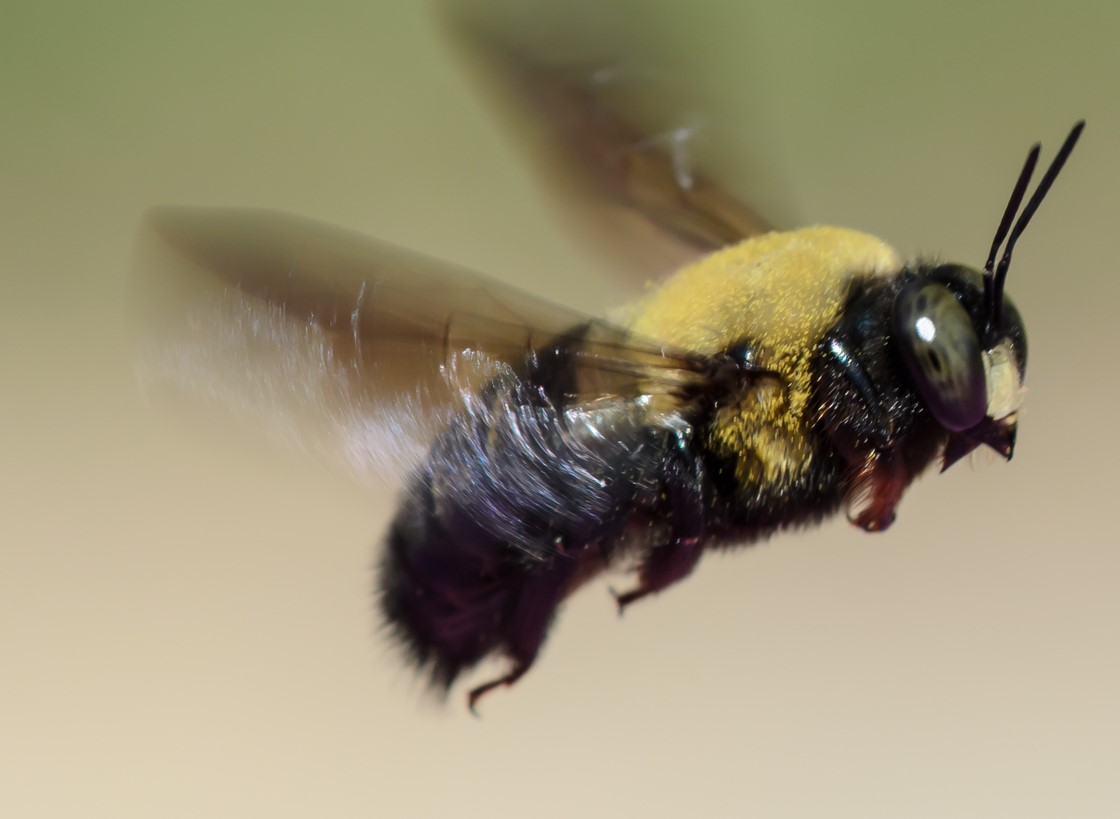My granddaughter is terrified of bees — especially bumble bees.

She comes by it naturally. Her mother is terrified of them too. I think it stems from seeing her baby sister repeatedly stung by a swarm of honeybees while playing on a neighborhood school playground. I’ll admit that it was a traumatic incident, but it happened over 30 years ago, so it’s time to move on! (On a side note- the one who was actually stung isn’t bothered in the least by bees; she considers them her garden friends)
Here in our neck of the woods, we begin looking for bumblebees in early February and expect to see them actively working until temperatures drop in the late fall. This year is unfolding differently. Only a single bumblebee explored my yard in early spring and for the past month or so, only a few have randomly appeared to check out my garden. Although that makes my daughter and granddaughter happy, it deeply concerns me. You see, our native bumble bee populations are in serious decline.

Depending on the source consulted, there are currently between 45 and 49 species of native bumble bees left in the United States. The number of bumble bees buzzing throughout the garden however, has dropped dramatically –as many as 1 out of every 2 bumble bees have disappeared from the landscape. One of the most common, and far-reaching species, the American Bumble Bee, is facing imminent extinction. They have already disappeared from 8 states across the country. Researchers with the Xerces Society and the North American Bumble Bee Specialist Group, put another 11 common species at risk for extinction too.
Unlike the honey bee which traveled from tropical Africa to Asia to Europe before being brought to the east coast of the United States in 1622, our bumble bee species are native pollinators who have evolved alongside native plant material. On one hand, bumble bees tend to be generalists, visiting a wide array of flowering plants in their daily search for pollen and nectar.  On the other hand however, they are known as critical pollinators of tomatoes, peppers, melons, raspberries, strawberries, blueberries, blackberries and cranberries. They are the only known pollinator of potatoes. Home gardeners depend on bumble bees for plentiful crops; commercial growers have been known to import them to greenhouses to improve pollination rates.
On the other hand however, they are known as critical pollinators of tomatoes, peppers, melons, raspberries, strawberries, blueberries, blackberries and cranberries. They are the only known pollinator of potatoes. Home gardeners depend on bumble bees for plentiful crops; commercial growers have been known to import them to greenhouses to improve pollination rates.
With their large, fuzzy bodies and their tendencies to loudly buzz as they forage, bumble bees have gained an  unfair reputation. They may look – and even sound – like aggressive monsters out to attack you, but the truth is that they are docile creatures. Only females and workers have stingers and the ladies are so well behaved that they will actually warn you before they strike. If you irritate her, or get too close to the nest, the female will stick up a middle leg (the bee version of the middle finger?), signaling that you need to move on If you choose to stay, then you may be stung multiple times Bumble bee stingers do not have barbs; the stinger stays with the angry bee.
unfair reputation. They may look – and even sound – like aggressive monsters out to attack you, but the truth is that they are docile creatures. Only females and workers have stingers and the ladies are so well behaved that they will actually warn you before they strike. If you irritate her, or get too close to the nest, the female will stick up a middle leg (the bee version of the middle finger?), signaling that you need to move on If you choose to stay, then you may be stung multiple times Bumble bee stingers do not have barbs; the stinger stays with the angry bee.
Bumble bees are the only native bees to live in colonies. All other native bees are solitary insects. Bumble bee colonies tend to be small, with only 50 to 500 bees living there at a time, Honeybee colonies usually range closer to 50,000 individuals at any given time. Bumble bees tend to nest in holes in the ground left by other burrowing animals. Other than the newest queen, bumblebee colonies die out when temperatures begin to drop in the fall. The young queen slips into hibernation mode for the winter. The next spring, if conditions are favorable, she will emerge and start a brand /new colony. Unfortunately, overly exuberant spring cleaning often destroys the nests which are typically quite close to the surface. Once disturbed, the new queen dies and one fewer colony begins.
animals. Other than the newest queen, bumblebee colonies die out when temperatures begin to drop in the fall. The young queen slips into hibernation mode for the winter. The next spring, if conditions are favorable, she will emerge and start a brand /new colony. Unfortunately, overly exuberant spring cleaning often destroys the nests which are typically quite close to the surface. Once disturbed, the new queen dies and one fewer colony begins.
Bumble bees, like so many of the world’s pollinators, face a myriad of other challenges. Habitat loss, climate change, non-native invasive plants and animals and widespread pesticide use all threaten their existence and threaten to leave yet another hole in our fragile environmental web. As much as I would like to be able to, as one individual I cannot reshape the world But I can do my part – even if its just teaching a six year old not to bee afraid!







